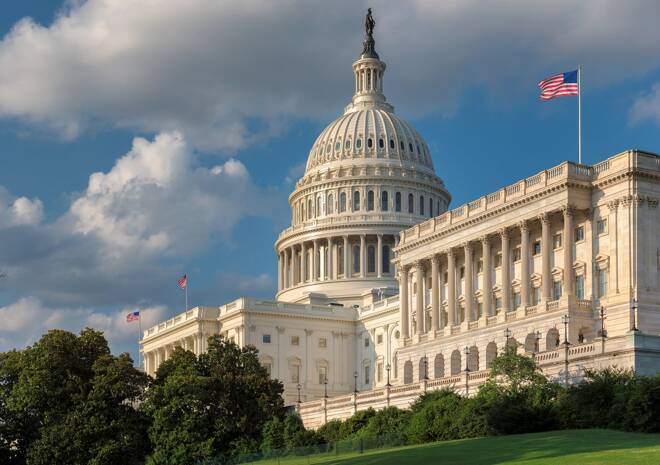Advertisement
Advertisement
U.S Treasury Calls for Banks to Take Control of Stablecoins
By:
Stablecoins were back in focus on Tuesday, with some lawmakers disagreeing with the U.S Treasury on handing stablecoins over to Banks.
Late last year, the U.S Senate Committee on Banking, Housing, and Urban Affairs held a hearing on stablecoins. The focus of the hearing was on how they work, how they are used, and what are their risks. USD Coin (USDC) was among stablecoins coming under scrutiny, with stablecoiners getting some tough questions from lawmakers.
The hearing had also touched on central bank digital currencies (CBDC) and the possible effect of stablecoins on financial stability and the effectiveness of monetary policy. Since the hearing, another U.S Congress sub-committee hearing on crypto mining and the environment targeted Proof-of-Work mining and Bitcoin (BTC) mining in particular.
An increase in activity comes amidst heightened government crypto market scrutiny across the world. The governments of the UK, India, the EU, and China are amongst others that have taken a closer look at digital assets and, in some cases, crypto mining.
NFTs and the U.S Treasury Collide
Just last week, the U.S Treasury highlighted concerns over the NFT market place and money laundering. A spike in illegal activity amidst surging trading volumes had drawn the attention of the U.S government. The U.S Treasury press release followed news of the Biden Administration announcing the imminent release of an Executive Action. The White House is to task agencies to take a closer look at cryptos, crypto mining, and NFTs.
A clear trend is developing, with lawmakers in the U.S not just looking at Bitcoin mining and crypto taxation.
U.S Treasury Steps in on Stablecoins
This week, the U.S Treasury and digital assets were back in the news, with stablecoins the area of focus. On Tuesday, a U.S House Committee on Financial Services held a hearing on stablecoins. The hearing delivered some mixed views on stablecoins, with the U.S Treasury calling for stablecoins to fall under the remit of “federally insured depository institutions”.
U.S Treasury representative Jean Nellie Liang talked of policy concerns that included illicit finance, user protection, and systemic risk. Liang added that stablecoins are “bank-like products as well as an investment-like product”. This has allowed them to fall into a “regulatory gap”.
Lawmakers had a mixed view, however, raising concerns that such a move would hinder innovation. There were also concerns of over-regulation and that “bank-like regulations would be improper for stablecoins”.
Differing opinions on how to handle stablecoins called for a more detailed discussion on stablecoins. Unlike the hearing on Bitcoin mining and the environmental impact, Tuesday’s hearing suggested that there was a scope for stablecoins to fall outside of banking product regulations. Whether the U.S Treasury gets its way, however, remains to be seen.
About the Author
Bob Masonauthor
With over 28 years of experience in the financial industry, Bob has worked with various global rating agencies and multinational banks. Currently he is covering currencies, commodities, alternative asset classes and global equities, focusing mostly on European and Asian markets.
Advertisement
